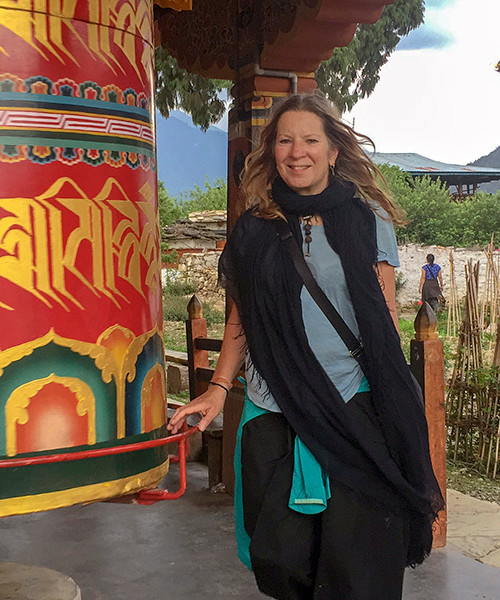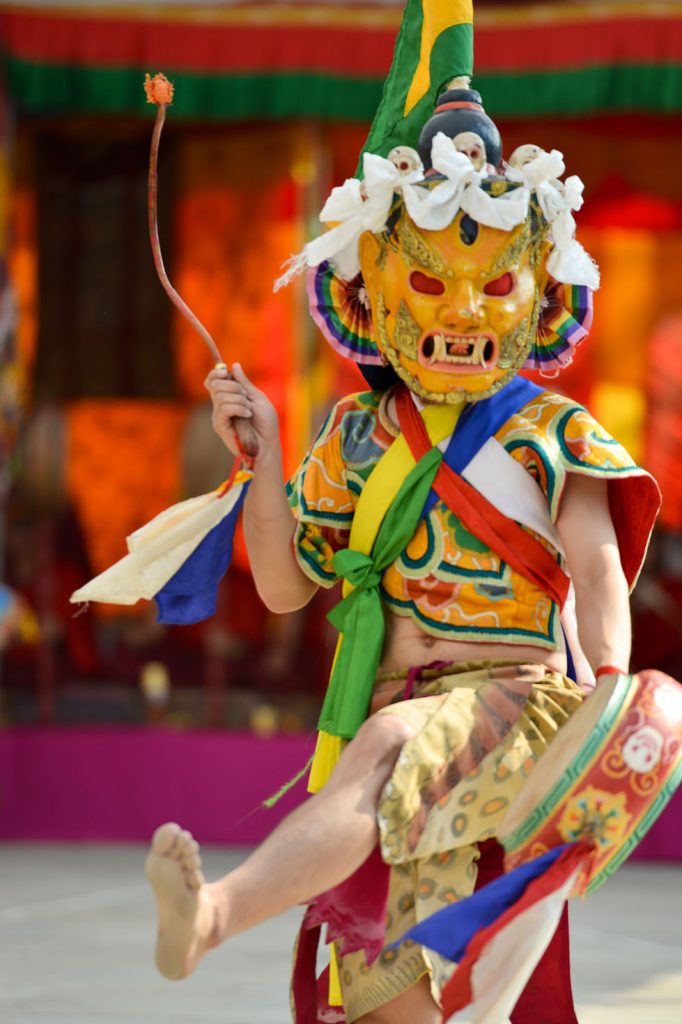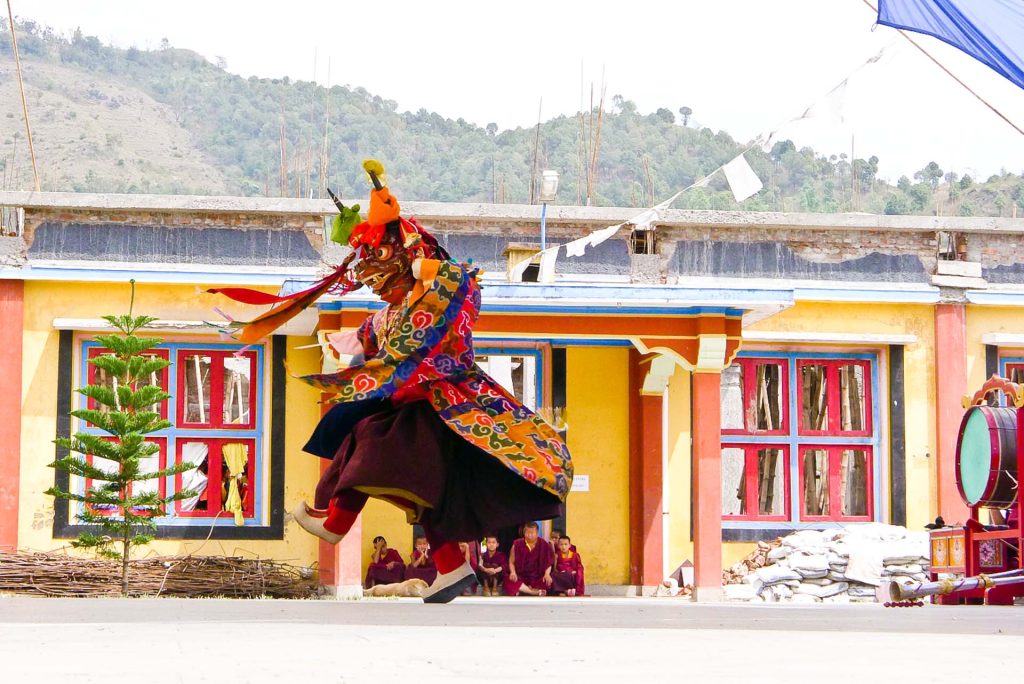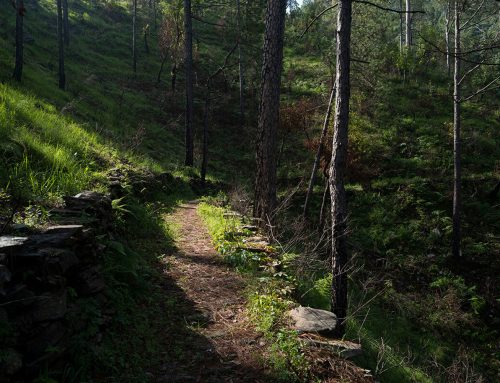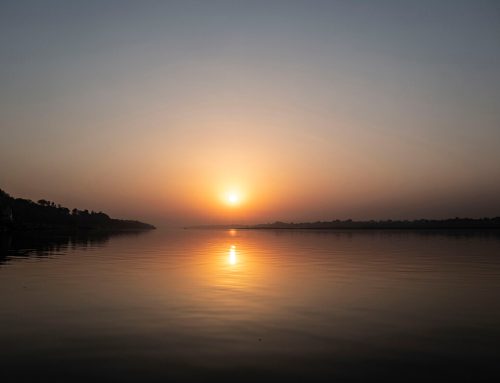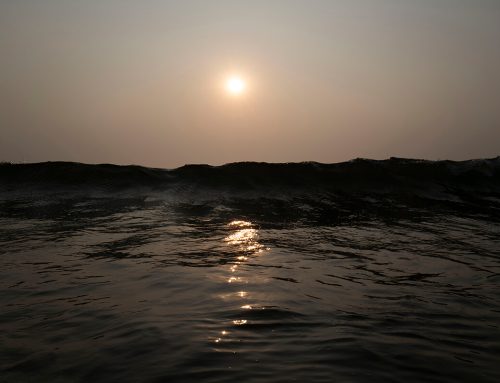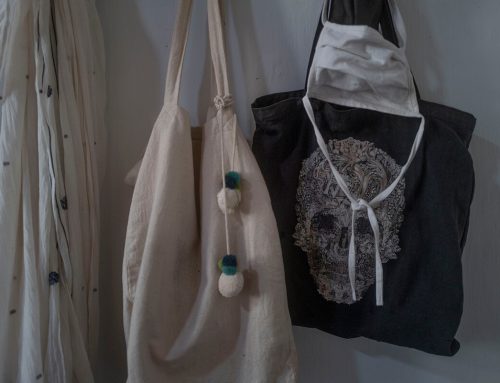Witnessing a mystical experience in a remote Buddhist kingdom
Whirling robes in vivid colours, red, blue, green and gold. Masks of demons and saints from the grotesque to the captivating. Jumping, thrashing and swirling bodies in a cacophony of colour and sound to delight and assault the senses. This is Cham Dance, a sacred masked dance to liberate all who watch from delusion and to pay homage to the sublime. In this article, catch a glimpse of what you could experience at one of these rituals.
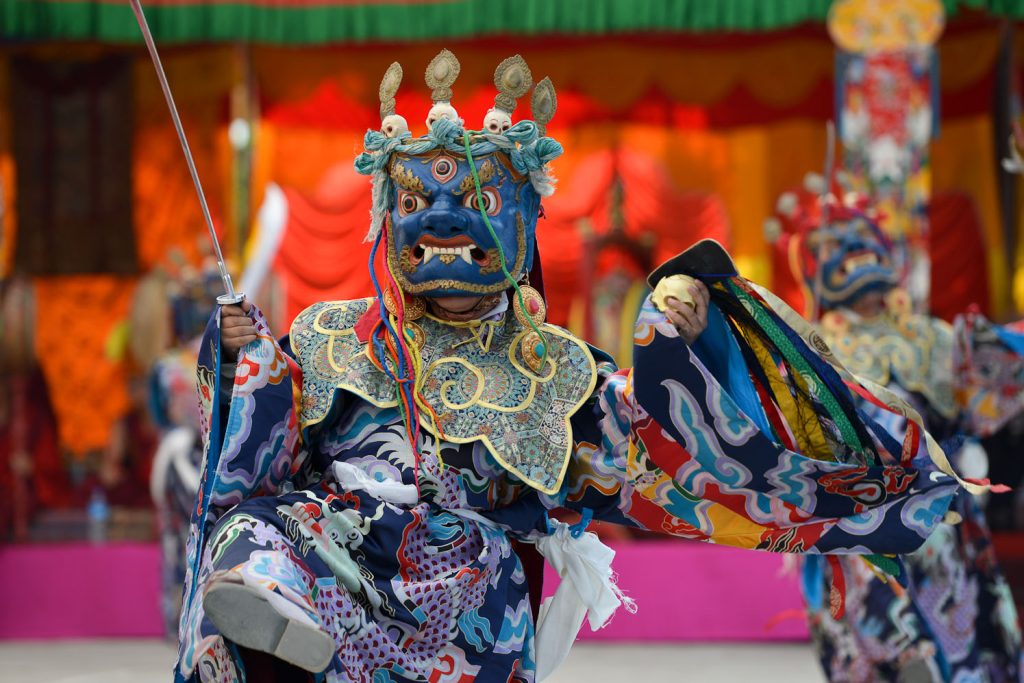
Gar Cham
Cham Dance or Gar Cham is a tradition that is as old as the country’s history. ‘Gar’ means, movement involving twisting of the body and ‘Cham’ means movement of hands and legs. Gar Cham is a dance that combines these movements. These masked dances are performed by monks during the annual ritual of Tshechu or ‘Tenth Day’ – considered to be the birthday of Padmasambhava, Bhutan’s patron saint.
Padmasambhava
The first recorded Cham Dance was performed in the 8th Century, around 740-760 AD (1). The Indian saint Padmasambhava (also known as Guru Rinpoche) was invited to Samye Monastery in Tibet, the first Tantric Buddhist monastery, to banish evil spirits. Padmasambhava is renowned for bringing the teaching of enlightenment to Bhutan. With those teachings came various practices, traditions and arts, including Cham Dance. When Padmasambhava was invited to Bumthang by the King of Chagkar, Sendha Gyalpo, to vanquish Shelging Karpo, he performed the Cham Dance to attract the deity’s attention.
These dances not only give joy to onlookers but have a special spiritual significance. The ritual dances leave powerful karmic imprints in the minds of those who observe them. They enable onlookers to attain spiritual merit and liberation from worldly suffering.
Thong droe
Thong droe means liberation by watching. For lay onlookers, Cham Dances have the power to liberate them from delusion. The dances are dramatisations of the teachings of enlightened spiritual masters, created and performed for the benefit of sentient beings. The masked dancers perform the roles of manifestations of higher beings and deities, this enables the performers and onlookers to appreciate the values of human life and pay homage to the sublime.
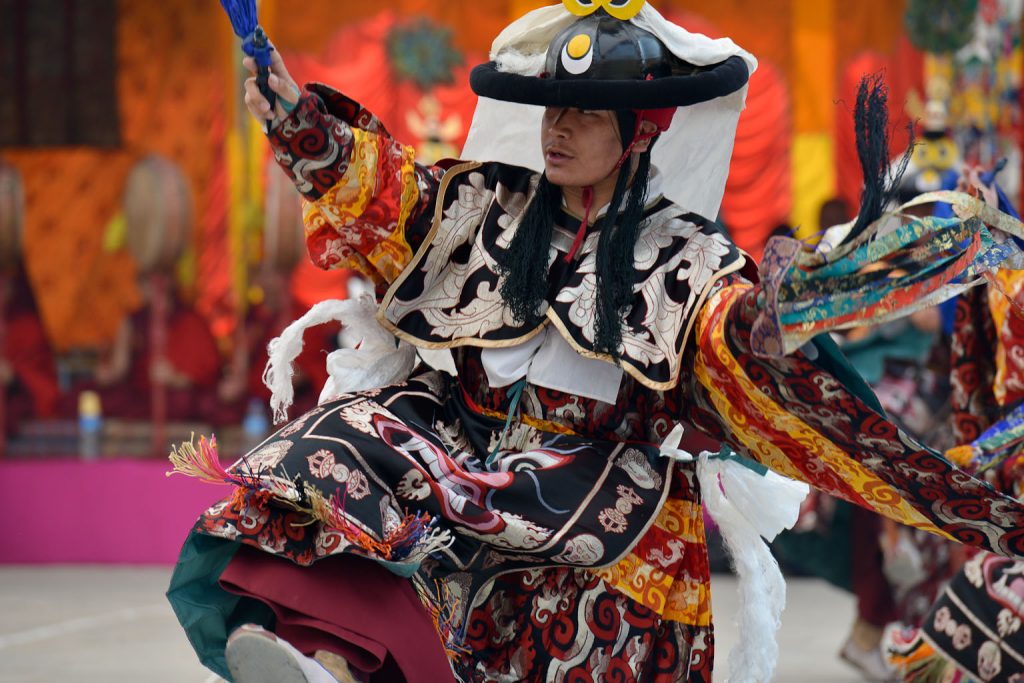
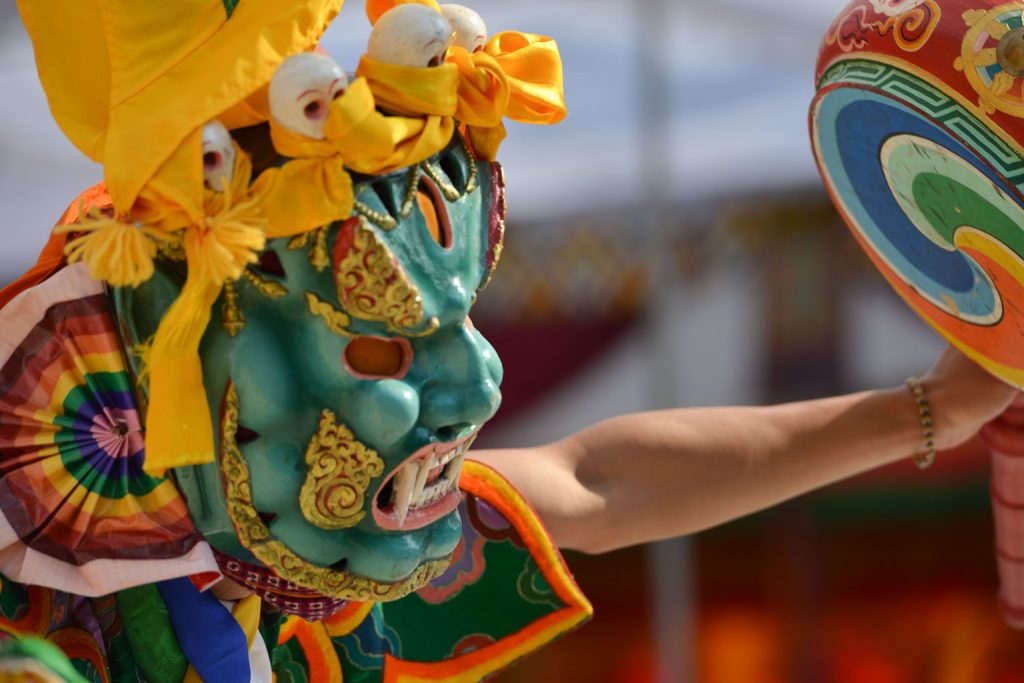
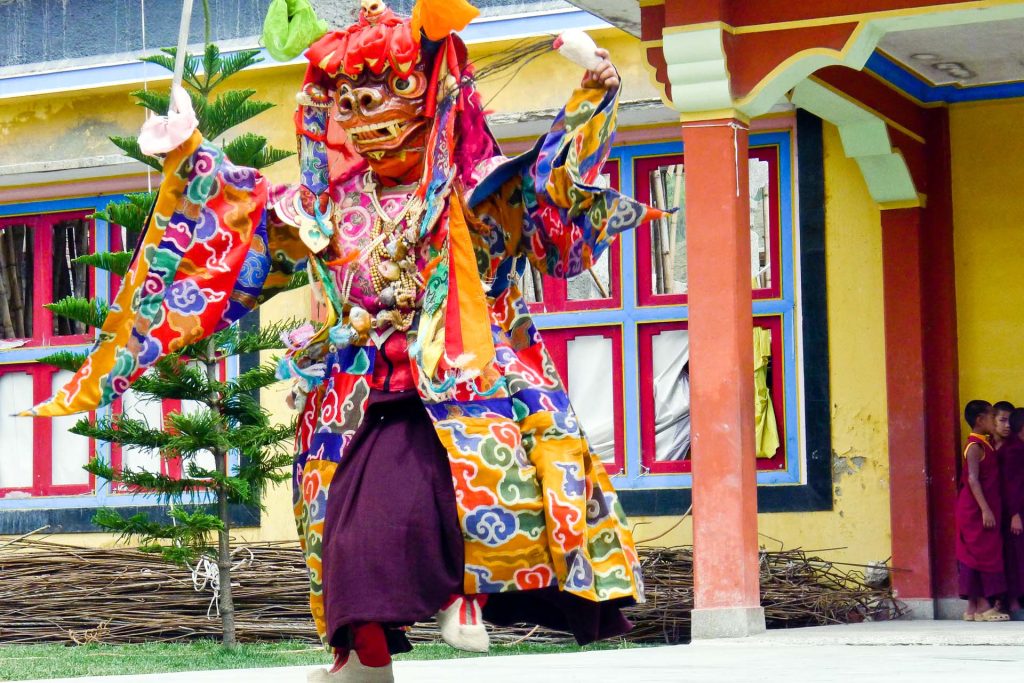
Movement
The dancers perform mudras (gestures) symbolic of the nine skills of dancing and eight manifestations of peaceful and wrathful deities. These are reminders of one’s spiritual and moral duties and obligations.
Visualisation
Each masked dancer must visualise their body as that of a divine being whilst performing their dance. They should visualise their speech as mantra, powerful enough to dissolve obstacles on the path to enlightenment. The mind should be visualised as a receptacle for the three types of meditation; right concentration, mindfulness and right view; and for the four sublime states; loving kindness, compassion, sympathetic joy and equanimity.
Significance
The movement of the dances can seem similar to other performing art practices that stem from a spiritual tradition. However, not only are these celebrations fantastic, elaborate, theatrical performances, they also have great spiritual and cultural significance. The ritual dances leave powerful karmic imprints in the minds of those who observe them. They enable onlookers to attain spiritual merit and liberation from worldly suffering.
Types of Cham Dance
- Tsun cham are the mask dances of the monks and can only be performed by monks.
- Boe cham are the mask dances of the laity and can be performed by monks if the situation demands it.
- Truelpai dzuthruel gyi cham are dances of magical manifestations, such as ‘Guru Tshengye’ (Dance the Eight Manifestations of Guru Rinpoche).
- Kater dagnang gi cham are dances passed on by manifestations of gurus and tutelary deities in visions and are performed by spiritual luminaries. Dances are often composed by tertons (treasure – revealers) to aid their discovery of treasure. Examples of these dances are ‘Peling Tercham’ (Treasure Dance of Pema Lingpa) and Thimphu Lhamoi Drubchen Cham.
- Namthar lu zhizhagpai cham are dances based on biographical accounts and stories of important spiritual figures and saints. Examples of this are ‘Shawo Shachi’ (Dance of the Stag and Hounds) inspired by Jetsun Milarepa, a Tibetan Buddhist and ‘Pholay Molay’ (Dance of the Noblemen and the Ladies) based on the biography of King Norzang, a mythical king in Buddhist literature.
- Regional Mask Dances. As different lamas and spiritual masters established their monastic sects, dances were composed for display to the public on auspicious days. Some examples of these dances are The Deity Dance of Sumthrang (Tsen Cham), Dance of the Five Sisters of Long Life (Tshering che nga), The Pig Dance of Tamzhing (Phag Cham), Thangbi Ber Cham – a ter cham / treasure dance, The Lion Dance of Jampa Lhakhang (Singye Cham), Dekiling Ter Cham, The Yak Dance of Tang (Yak Cham) and The Dance of Sister Lhamo (Achey Lhamo).
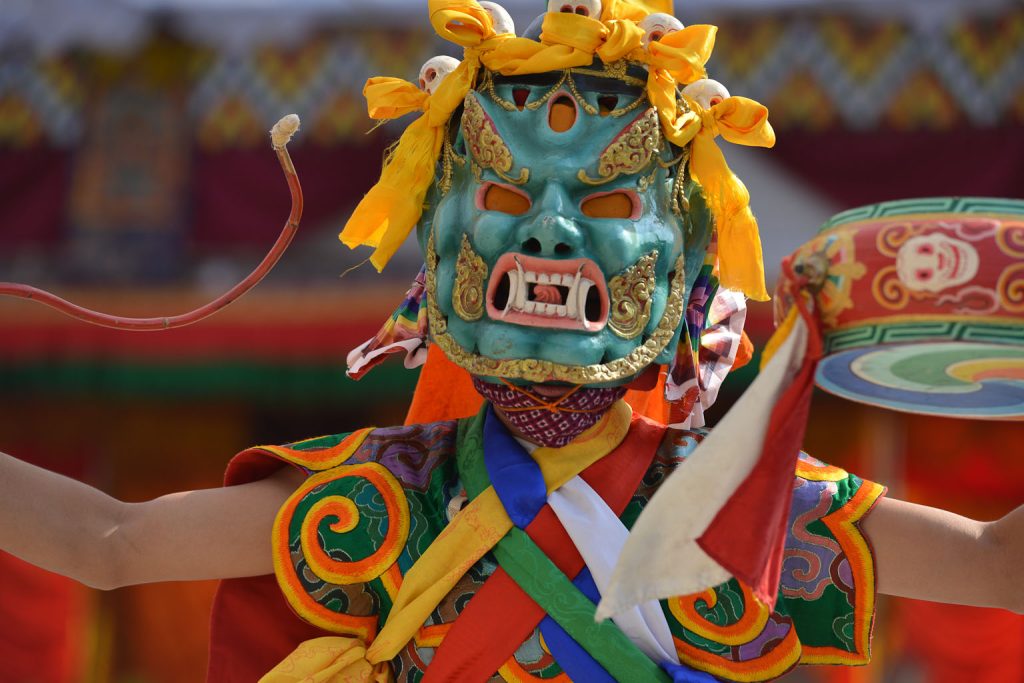
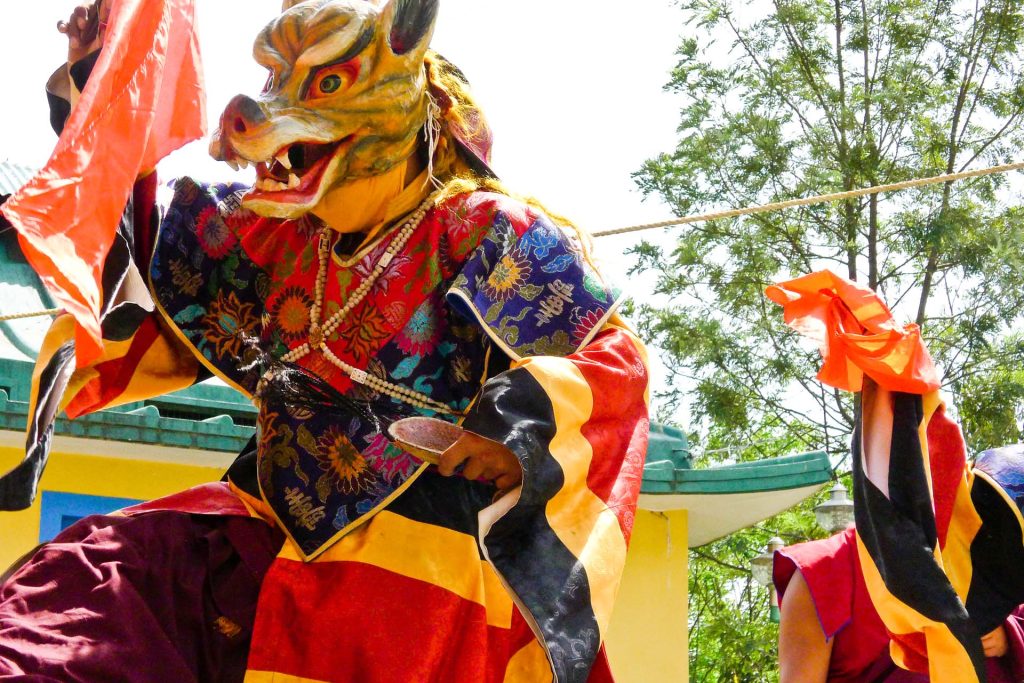
A list of Cham Dances which are performed by monks
- Black Hat Drum Dance (Zhana Nga Cham)
- Dance of the Terrifying Deities (Tung Ngam Cham)
- Wrathful War Dance (Ging Tsholing Cham)
- Dance of the Eight Manifestations of Guru Rinpoche (Guru Tshengye)(2)
- Dance of the Sixteen Wisdom Consorts (Rigma Chudrug)
- Dances of the Courtiers (Boe Cham)
- Dance of the Four Stags (Sha Zam Cham)
- The Three Ging Dances of Pema Lingpa – dance holding stick (Jug Ging) , dance holding sword (Dri Ging) and dance holding drum (Nga Ging), performed in sequence.
- The Treasure Dance of Pema Lingpa (Peling Tercham or tshangmai ging cham)
- The Dance of the Stag and Hounds (Shawo Shachi Cham )
- The Guitar Dance (Dranyen Cham)
- The Dance of the Noblemen and Ladies (Pholay Molay)
- The Drum Dance of Drametse (Drametse Ngacham)(3)
- Dance of the Lords of the Cremation Grounds (Durthroe Dagmo Chezi Cham commonly known as Durdag Cham or just Durdag)
- Dance of the Judgement of the Dead (Raksha Mangcham)
- Dance of the Heroes (Pa Cham)
- The Religious Dance (Choe zhey)
For more information and detail on these numerous and varied Cham Dances read this excellent article on the subject from The International Information and Networking Centre for Intangible Cultural Heritage in the Asia-Pacific Region.
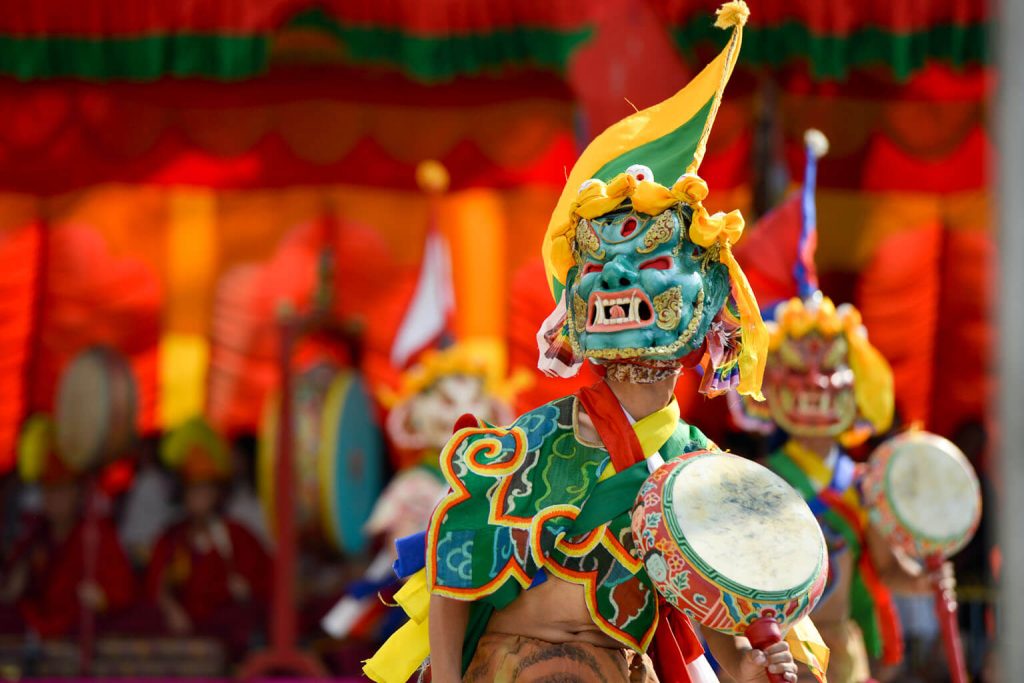
Continuing the tradition of masked dances
By the 15th Century Pema Lingpa had expanded the scope of sacred masked dances to include dances such as the Peling Ging-Sum, the three dances of ging, or emanations of Guru Rinpoche, in the Pema Lingpa tradition. This tradition of dances includes the Jug ging (dance holding stick), Dri ging (dance holding sword) and Nga ging (dance holding drum).
In the 17th century Zhabdrung Ngawang Namgyal introduced the dance of Mahakali which is performed during the annual festivals dedicated to the deity.
![]() Take a look here at what you could witness at one of these dances in this spectacular documentary film by Brandon Beacon Hill. Embedded video.
Take a look here at what you could witness at one of these dances in this spectacular documentary film by Brandon Beacon Hill. Embedded video.
“Ever since I have known of Tibetan Cham (13 years) I have always wanted to witness one. This is my third time seeing a Cham and my first in North Sikkim and it was undoubtedly one of the most incredible events I have ever seen. The day was pure magic!” – Director Brandon Beacon Hill on his experience of Cham Dance
On Elton Yoga’s East and Central Bhutan Yoga Adventures we will be experiencing a local Cham Dance Festival; visiting Gomphu Kora, also know as Gom Kora, Lhakhang in Bumthang (Yoga Adventure in East Bhutan) and Thamshing Lhakhang (Yoga Adventure in Central Bhutan).
About Pema Lingpa & Gom Kora
Pema Lingpa (1450–1521), one of the five King Tertöns (2), visited Gom Kora in the 14th century AD. Tertöns are incarnations of Padmasambhava’s main disciples, of which Pema Lingpa is considered second only to Padmasambhava. At Gom Kora he enlarged the existing shrine and is known as the treasure revealer for discovering several sacred items including; a statue of the Buddha, Guru Padmasambhava’s amulet, the footprints of the Guru and his consort, and the footprints of the Guru’s horse.
Behind the Gomphu is the cave in which several impressions of Guru Padmasambhava can be found, including an imprint of his hat in the ceiling, thumbprints sealing a contract with a demon, and his wings from when he transformed into a garuda (3).
Pema Lingpa & Tamshing Goemba
In 1501 Pema Lingpa established the Tamshing Goemba, formally the Tamshing Lhendup Chholing (Temple of the Good Message). Tamshing is the original home of the Tsechus (festivals), the focal point of which is Cham dance. The Goemba lies is 5km from Jakar and is considered the most important Nyingma goemba in the kingdom. The structure was built by Pema Lingpa himself with the help of khandromas (female celestial beings). The architecture is unusual, with the height of the balconies being quite low – Pema Lingpa was a relatively short man and the ceiling was built to his exact height. The temple is filled with elaborate artwork, statues, paintings and masks used for Cham dances. The primary statue which is of Guru Rinpoche lies in the inner sanctuary. By his side are Jampa (Maitreya, the Buddha of the future) and Sakyamuni. This statue is of particular importance as it was sculpted by the khandromas, who created a number of the statues inside the temple. Tamshing Goemba is now the seat of Sungtrul Rinpoche, the current speech incarnation of Pema Lingpa.
Are you interested in experiencing a Cham Dance and Thong Droe (liberation by watching) for yourself?
Join us on one of Heather Elton’s Yoga Adventures in Bhutan.
Yoga Adventure in East Bhutan | March 29 – April 10, 2020 | Click here for more details and to apply.
Yoga Adventure in Central Bhutan | September 21 – October 2, 2020 | Click here for more details and to apply.
Written by Ashley Bailey
Footnotes:
- https://dancehistorydevelopment.wordpress.com/2013/05/16/cham-dance-the-masked-ritual/
- Dance of the Eight Manifestations of Guru Rinpoche (Guru Tshengye)
- Guru Tshokye Dorji: When Guru Rinpoche miraculously took birth from the lake Dhanakosha and became the son of King Indra Bodhi; he came to be known by this name.
- Guru Shakya Singye: When Guru Rinpoche left the pleasures of the palace to seek the path of Dharma in the cave of Maratika, he was known by this name.
- Guru Loden Chogsed: When Guru Rinpoche had mastered all the instructions of the Sutras and Tantras in the sacred places of India, he was known by this name.
- Guru Pema Sambhava: When Guru Rinpoche took the mystical consort Lhacham Mendarava, her father, the King of Zahor took offence and set him on fire. However, the fire miraculously turned into a lake of lotuses. Due to this feat, Guru Rinpoche was known by this name.
- Guru Pema Gyalpo: When Guru Rinpoche returned to the domain of Ogyen, the evil ministers tried to kill him along with his parents. However, they were defeated and subsequently converted to Buddhism. Guru Rinpoche was known by this name as a mark of accomplishing this feat.
- Guru Nima Oezer: When Guru Rinpoche wandered through the eight great charnel grounds including the legendary Sewa Tshal, giving teachings to dakinis and taming the evil forces, he was known by this name.
- Guru Singye Dradrog: When Guru Rinpoche prevailed over forces opposed to the Dharma in the centre of the world, Bodh Gaya, by accomplishing miraculous feats, he was known by this name.
- Guru Dorje Drolo: When Guru Rinpoche flew on the back of a tigress from Singye Dzong in Kurtoe to Tagtshang in Paro, concealing sacred objects and prevailing over evil forces, he was known by this name.
- In 2005 Drametse Ngacham was proclaimed a Masterpiece of the World Intangible Heritage by UNESCO.
- Tertön – Tertön is a term within Tibetan Buddhism meaning a person who is a discoverer of ancient hidden texts or terma. Many tertöns are considered to be incarnations of the twenty five main disciples of Padmasambhava. Source: Tertön
- A garuda is a legendary creature, part bird and part human, from Hindu, Buddhist and Jain mythology. Garuda was also the vehicle of Hindu god Vishnu.

